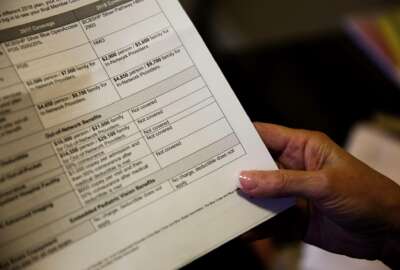Let your health plan fund an IRA, pay your premiums
Don’t be wedded to your current, traditional plan just because you’ve been with it for years.
Folks who do their health plan homework between now and Dec. 9 can in many cases save a couple thousand dollars in premiums next year — right off the bat. And/or they can get started with an “IRA on steroids” paid for by their health plan.
Many retirees can have their Medicare Part B premiums paid for them by their health plan. The trick is knowing which plans work best for you, and how your long-time plan, which has been great in every way, may have simply become too expensive.
Walton Francis, editor of Consumers’ Checkbook Guide to Health Plans for Federal Employees says the IRA on steroids is available to workers who pick from one of several plans high deductible heal plans (HDHPs) or consumer-driven health care (CDHC) plans that will give you money each year to be used for medical services or, if not used, can be rolled over into an account earns interest. In some cases, he says, participants have built up five-figure accounts.
HDHPs, for example, offer two kinds of spending accounts: Health savings accounts which can grow in value — many people have $12,000-plus accounts, money you can keep even if you leave the plan; and health reimbursement arrangement plans (HRAs), which also offer accounts which terminate if you leave that plan. So how do they work and is one of them your best buy?
Knowing that the plans with the savings options exist is a first step. Don’t be wedded to your current, traditional plan just because you’ve been with it for years. Although it is torture for some, do some shopping. Start with the Checkbook Guide, either the online or print version which is available in many Washington, D.C.-area book stores and drugstores.
Also, check with your agency, union or professional association. Many have subscribed to the online version of Checkbook. Many agencies encourage workers to shop at the office because when workers pick lower premium plans the government, which pays two-thirds of the total premium, saves money. How do you know if your agency has subscribed for you. Click here for the list.
If not, you can actually pay for it yourself. Some items for your health plan checklist:
- Know the five-year rule: Be sure you are enrolled in one of the Federal Employees Health Benefits Program health plans for the five years prior to retirement. Otherwise you and your spouse could be left without insurance in retirement, or you could be forced to delay retirement for five years.
- Know the difference between a fee-for-service plan and a local health maintenance organization. HMOs are great and generally have lower premiums. But if you want to go for treatment at the Mayo Clinic odds are they won’t pay.
- Couples should crunch the numbers to determine if two single plans or a self-plus-one plan is the better deal. Consider deductibles as well as premiums.
- If one partner is a working fed and the other a retired fed, who should pay the premium? Short answer — the working fed. Why? Taxes!
- Should you wait until retirement to put your private sector spouse on your FEHBP plan? If you die first and he or she aren’t covered by your plan they won’t be eligible for FEHBP.
Listen to our Your Turn radio show today at 10 a.m. EST, either by tuning into 1500 AM in the Washington, D.C. area or by listening live at www.federalnewsnetwork.com. Walton Francis is my guest and he’s got all the answers, including to questions you didn’t know should be asked about coverage for you and your family.
Feds in the Washington area have 40 bewildering plans and options to choose from. In other cities there are about 30 choices. The show will be streaming live and then archived on our website so you can listen again, or listen later, or refer it to a friend. If you have questions for Walt Francis send them to me by showtime at mcausey@federalnewsnetwork.com
Nearly Useless Factoid
By Amelia Brust
Prague is known for its architecture and sculpture but one in particular frequently sparks calls to police. David Černý’s “Zavěšený muž” (“Man Hanging Out”) is a 7-feet-tall bronze sculpture of Sigmund Freud, hanging onto a rooftop pole over an alley. The piece represents Freud’s constant fear of death; the famed Austrian psychoanalyst died by euthanasia at age 83 while suffering from cancer. But from a distance many passerby have mistaken the sculpture for a person hanging themselves.
Source: Civic Arts Project
Copyright © 2025 Federal News Network. All rights reserved. This website is not intended for users located within the European Economic Area.
Mike Causey is senior correspondent for Federal News Network and writes his daily Federal Report column on federal employees’ pay, benefits and retirement.
Follow @mcauseyWFED





